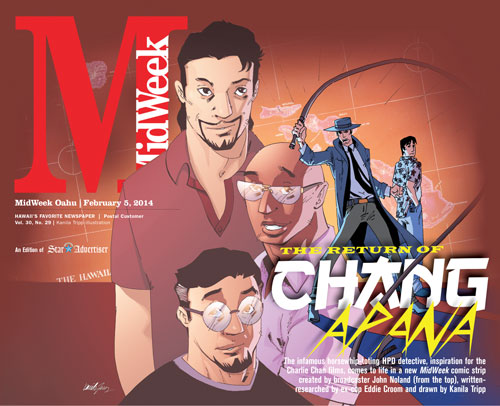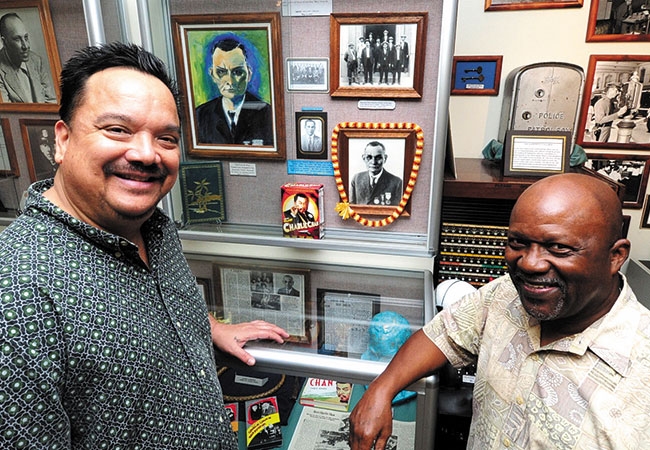The Return of Chang Apana
Growing up in Hawaii, radio personality John Noland used to wonder why there were never any local heroes in the serials, radio or TV.
The savior always seemed to come with white skin and a gun, sometimes a Detroit Tigers ball cap. As a local boy, he longed to see one of his own come through in the clutch and save the day.
“I thought the first thing I would like to do is a graphic serial because there has never been a local hero serialized here,” says Noland, who starts a new show on 1500AM in February. “We have got Gecko Man, Pineapple Man, and I was, like, there have got to be better heroes than that — Duke Kahanamoku, Kamehameha I. There are so many great profiles to be done here.”
mw-cover-020514-changapana-nw-7
The name he finally seized upon has a little less name recognition than those two but just as interesting a life, Chang Apana. While his story is the stuff of the silver screen, his body was more that of a jockey at the Derby.
Standing 5-foot-3 and weighing 140 pounds in uniform, he didn’t cast much of a shadow, but so inspiring was his success in cleaning up the streets of Chinatown that he spawned the fictionalized and oversized doppelganger of himself, Charlie Chan, by writer Earl Biggers. But according to local police historian Eddie Croom, even with several novels written and dozens of movies featuring the Chan character, they never came close to capturing Apana’s style or substance.
“When you looked at Chang, he wasn’t the kind of guy to inspire you as a movie hero,” says Croom, who became fixated on Apana while researching the history of Honolulu Police Department as curator for the police museum at its Beretania Street headquarters. “The character of Charlie Chan is nothing compared to the life that Chang Apana actually lived.”
Apana served in Chinatown through the three different governments that ruled these Islands at the turn of the 20th century, never compromising his codes and never carrying a gun. True to his paniolo roots, his weapon of choice was a horsewhip, and he was the only officer in the state authorized to carry one.
He began his career in the police force with the humane society — back then they were actually officers of the law — because of his previous work with horses. But his superiors soon realized his knowledge of both the Hawaiian and Chinese languages would be invaluable in helping to regulate the unruly Chinatown, known by sinister nicknames such as “Blood Town” and “Hell’s Half Acre.”
The aspect of Apana they did not think about was how his size would help him in the tight and winding alleyways that connected all of Chinatown. “He used his size to scale the sides of buildings, and he could move through the alleys quickly, going under and over things,” says Croom.
This ability to keep up with perpetrators led to its own set of problems. He once had a criminal try to bash his head in with an ax handle, got slashed by a sickle from a leper (leaving him with a scar over his right eye) and was thrown from a second-story window by drug addicts, only to land on his feet on the street below. “One time he got into a fight with a Filipino guy with a knife and he had to slide under a stoop to go after him.







